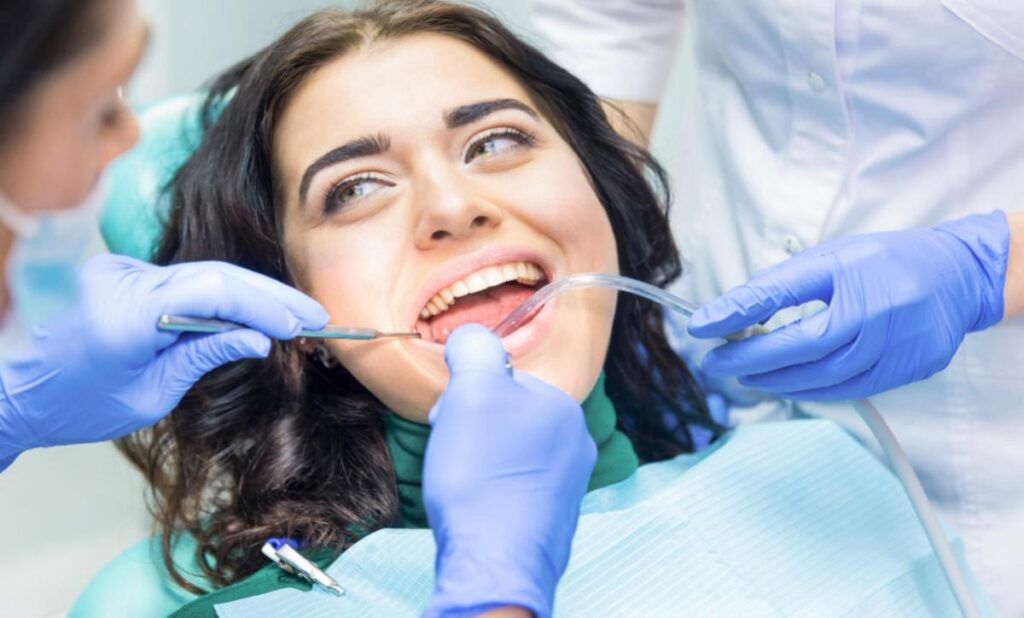Introduction to Orthodontic Options
Choosing the right orthodontic treatment is crucial for achieving a healthy and beautiful smile. Braces and Invisalign are two popular options, each with its own set of advantages and considerations. This comprehensive guide will help you understand the differences between these Dental Treatment options, aiding you in making an informed decision.
Understanding Traditional Braces
Traditional braces consist of metal brackets and wires that gradually move teeth into the desired position. They are highly effective for correcting complex dental issues such as severe misalignment, overcrowding, and bite problems. This Dental Treatment is often recommended for children and teenagers but can be effective for adults as well.

Exploring Invisalign
Invisalign uses a series of clear, removable aligners to straighten teeth. These aligners are custom-made for each patient and are replaced every one to two weeks. Invisalign is known for its discreet appearance and convenience, making it a popular choice among adults and image-conscious teens. This modern Dental Treatment offers a less noticeable alternative to traditional braces.
Aesthetics and Appearance
One of the main considerations when choosing between braces and Invisalign is aesthetics. Traditional braces are visible, which may be a concern for some individuals. In contrast, Invisalign aligners are nearly invisible, offering a more discreet way to straighten teeth. For those prioritizing appearance during Dental Treatment, Invisalign may be the preferred option.
Comfort and Convenience
Comfort is another significant factor. Braces can cause discomfort, especially after adjustments, due to the metal brackets and wires. Invisalign aligners, made from smooth plastic, tend to be more comfortable and cause less irritation to the gums and cheeks. Additionally, Invisalign aligners are removable, allowing for easier eating and oral hygiene, which enhances the overall convenience of this Dental Treatment.
Effectiveness for Different Dental Issues
The complexity of your dental issues can influence your choice. Traditional braces are highly effective for a wide range of orthodontic problems, including severe misalignment and bite issues. Invisalign is effective for mild to moderate cases but may not be suitable for more complex conditions. Consulting with your orthodontist will help determine which Dental Treatment is best suited for your specific needs.
Treatment Duration
The duration of treatment can vary between braces and Invisalign. Traditional braces typically require 18 to 24 months, while Invisalign treatment can range from 12 to 18 months, depending on the severity of the dental issues. Your orthodontist will provide a more accurate timeline based on your individual case, helping you understand the commitment required for each Dental Treatment.
Cost Considerations
Cost is an important factor in choosing between braces and Invisalign. Traditional braces are generally less expensive than Invisalign, but the cost can vary based on the complexity of the treatment and the duration. Invisalign tends to be more costly due to the advanced technology and customization involved. It is essential to consider your budget and insurance coverage when evaluating these Dental Treatment options.

Maintenance and Oral Hygiene
Maintaining oral hygiene is crucial during orthodontic treatment. Braces can make brushing and flossing more challenging, increasing the risk of plaque buildup and cavities. Invisalign aligners can be removed for eating, brushing, and flossing, making it easier to maintain good oral hygiene. However, it is important to clean the aligners regularly to prevent bacteria buildup. Both Dental Treatment options require diligent care to ensure optimal results.
Conclusion
Choosing between braces and Invisalign involves considering various factors such as aesthetics, comfort, effectiveness, treatment duration, cost, and maintenance. Both Dental Treatment options offer unique benefits and can help achieve a beautiful, healthy smile. Consulting with an orthodontist will provide personalized recommendations based on your specific dental needs, ensuring you make the best choice for your orthodontic journey.
FAQ
- What are the main differences between braces and Invisalign? Braces use metal brackets and wires, while Invisalign uses clear, removable aligners.
- Which is more comfortable, braces or Invisalign? Invisalign aligners are generally more comfortable as they are made of smooth plastic and cause less irritation.
- Can Invisalign treat all types of dental issues? Invisalign is effective for mild to moderate cases, but traditional braces may be necessary for more complex issues.
- How long does treatment with braces typically take? Braces usually require 18 to 24 months of treatment.
- Is Invisalign more expensive than braces? Invisalign tends to be more costly due to the advanced technology and customization involved.
- How do braces and Invisalign affect oral hygiene? Braces can make brushing and flossing more challenging, while Invisalign aligners can be removed for easier cleaning.
- Can adults use braces or Invisalign? Both braces and Invisalign are suitable for adults and can effectively straighten teeth.
- How often do I need to visit the orthodontist with braces or Invisalign? Regular check-ups are required for both treatments, typically every 4-8 weeks for braces and every 6-8 weeks for Invisalign.
- Can I eat normally with braces or Invisalign? With braces, certain foods should be avoided to prevent damage, while Invisalign aligners can be removed for eating.
- Will insurance cover the cost of braces or Invisalign? Many dental insurance plans cover part of the cost for both treatments, but coverage varies, so it’s important to check with your provider.












